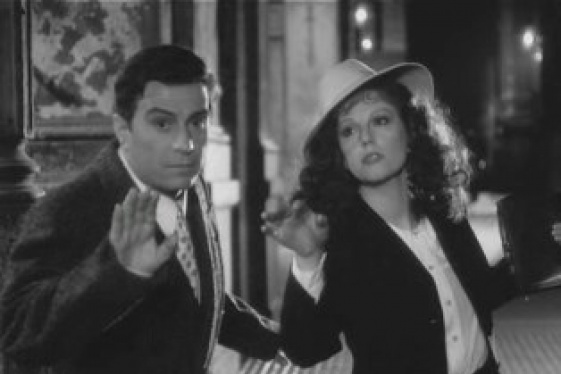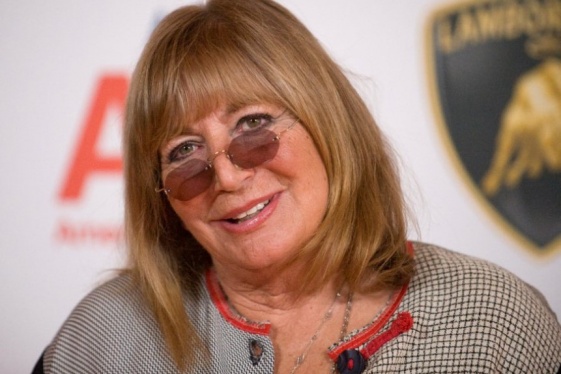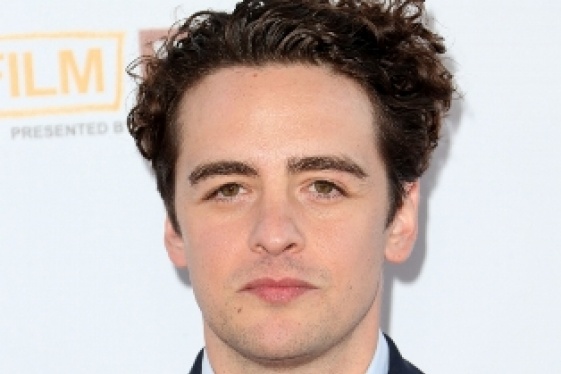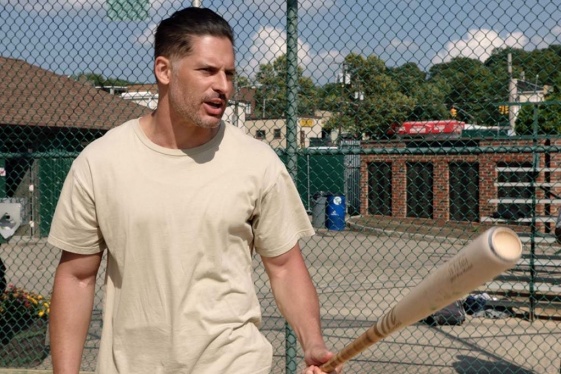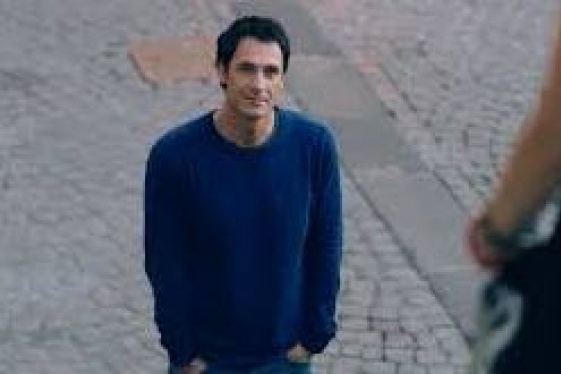

by Cookie Curci
With the exception of a few films or TV series, today's Italian-American actors have become little more than a cookie-cutter image of the nefarious mobster. Italian American film characters have been limited to the roll of mob boss or Mafia hit men. With the popularity of HBO's "The Soprano's" and the constant resurgence of Francis Ford Coppola's 1972 film, " The Godfather," parts I, II & III, the Italian American image has regressed to an unflattering stereotype.
As an Italian American growing up in a post war America, it wasn't unusual to experience some prejudice. Like many, whosegrandparents emigrated here during the great migration, my family was second generation. Because Italy's tyrant Benito Mussolini had joined Germany's forces against the United States we were viewed with some suspicion. For that reason we never spoke our native Italian language outsidethe home and, even then, we would reprimand our parents and grandparents for speaking it to each other. Because of this, we lost a good deal of what should have been our inherited second language.
In order to fit in with our peers we concealed much of our Italian heritage. Public opinion was formed quickly against all those whose former country sided against the U.S. Italian Americans were often ridiculed, even though our fathers, uncles and brothers had joined America's Armed forces and were fighting these hated oppressors.
The Italian American image had suffered greatly during these years. Name-calling was common and I, like many Italian American kids, was called unfaltering names such as "Wop" and "Dago." We responded in kind with this verse, " If I'm a Dago and I'm a Wop, I eat spaghetti and you eat slop!" Ethnic and racial epithets can be painful and damage the spirit for years to come.
In the 1950s, Hollywood film makers film makers created a new wide screen image of Italy and the romantic leading man. Italian Americans were more than eager to embrace this new improved image. Up until that time the only films we'd seen of the old country were wartime tragedies, films from the 1940s that depicted Italy in ruins, destruction, hunger and poverty.
It was no wonder when handsome actors Marcello Mastroianni and Rosano Brazzi starred in a succession of romantic, panoramic, Technicolor films, the Italian community readily accepted this new on screen stereotype. The image of the bon vivant romantic leading man was far more desirable than that of warmonger. During the 1950s and '60s, what America wore, what its citizens drove and how they looked was in a large part dictated by Italy's trend setters, which included fashion designers, film directors and auto makers. If it originated in Italy, and the designer's name ended in a vowel, the American public was buying it.
The film industry was responsible for the public's newfound interest in the Italian way of life. With films such as Federico Fellini's, La Dolce Vita and La Strata, Italian movie makers had stirred a lust in America's heart that hitherto had not been touched. Italy's "leave it till tomorrow" lifestyle and carefree attitude appealed to the American moviegoer, who quickly began to emulate the "dolce" lifestyle.
Songs such as Dean Martin's "That's Amore," Al Martino's "Al di la" and Mario Lanza's "Arrivederci Roma" were high on America's hit parade. Even Walt Disney got in on the act when he had the Italian tune "Bella Notte" composed especially for his animated hit, "Lady and the Tramp." Films featuring Italy were sure to draw people to the box office. Movies such as, "Three Coins in the Fountain," "Summertime," and "The Rose Tattoo", helped feed the frenzy for all things Italian. Wildly famous Italian fashion designers, Cassini, Pucci, Gucci, Givinchy, and Simonetta were hotly in demand, as were these fast cars made by Italian auto makers: Lamborghini, Maserati, Ferrari and Alfa Romeo. Instead of name calling, it was now enviable to be Italian and live "La dolce vita."
In 1961, when Photoplay magazine asked its readers to vote for their favorite new Hollywood actor, Italian born stars Marcello Mastroianni and Rosano Brazzi finished first and second, respectively, on a list that included Italian Americans Frank Sinatra and Dean Martin. Suddenly, everything was Italian. It was during this time that actor Marcello Mastroianni, with his tall, dark and handsome good looks just naturally filled the roll of the bon vivant man of the world. Mastroianni stared in a series of films with the equally famous and leading actress, Sophia Loren. Among the most memorable of these films- "Yesterday, Today and Tomorrow." Award winning costumes by Christian Dior enhanced these films, which exploited the earthy sex appeal of both stars. The trend continued in 1954 when Rosanno Brazzi ignited the screen in the film, "Three Coins in the Fountain" and later stared with Katherine Hepburn in the romance classic, "Summertime" (1954).
Though these films and the actors who stared in them didn't accurately reflect Italy or our heritage, they were a step up in the right direction and had helped to fill a void in the lives of post war Italian Americans.
Part 1: Post War America
A DARKER STEREOTYPE APPEARS
It wasn't again until the 1970's that the names of Italian American actors would again become household words. This time around, it was actors Al Pacino and Robert DeNero who would carry the baton for their predecessors. Unfortunately, they would become popular for the nefarious, criminal characters they portrayed. Robert DeNero's Films: "Raging Bull", " The Godfather", "The Untouchables", " Goodfellows" "Casino" and a "Bronx Tale" consistently associated Italian Americans with violence and crime.
For decades to come, Al Pacino's portrayal of Michael Corleone, in the wildly popular "Godfather" series, would lay the groundwork for the future depiction of Italian Americans on film. Recently, the short sighted image of the Italian American leading man is epitomized by HBO's James Gandolfini and his menacing character, " Tony Soprano''.
HOPE FOR THE FUTURE
Perhaps the future of the Italian American film image lies in the hands of artistic genius Roberto Benigni, (It's A Beautiful Life) or the handsome face and acting skills of Leonardo DiCaprio, (The Titanic) or the inherited talents of screen writer/director Edoardo Ponti (Between Strangers), son of Sophia Loren and Carlo Ponti. Perhaps they can do what Scorcese and Coppola have failed to do.
It's my hope that this new breed of actors and directors will bring to the screen a new reflection of the Italian American and depict their ancestralheritage in a more positive light. Hopefully, in the near future when we go to the movie theaters or click on our TV sets, we'll see films and actors who epitomize our cultural heritage in a more constructive and exciting way. Films that will make every Italian heart beat faster, not with fear, as inspired by characters from "The Soprano's", but rather with warmth, anticipation and appreciation for the beauty and culture that is uniquely Italy's own.
You may be interested
-
In sordina, l’Italia ritorna in scena al Nat...
La presenza italiana a Natpe 2016, la principale fiera Tv per il mercato Latino Americano...
-
New York Italians Movie Night: "C'eravamo ta...
Dear Friends, New York Italians in collaboration with Fordham University, Department...
-
'A League of Their Own' director Marshall dea...
Actress and director Penny Marshall, whose love of sports made her a regular in the Los An...
-
'Avengers: Infinity War' Directors Inducted I...
The Russo Brothers were a pair of the Marvel Cinematic Universe's best directors even prio...
-
'Boardwalk Empire' Season 5 News: Vincent Pia...
Recently, actor Vincent Piazza, who plays up-and-coming gangster Lucky Luciano on the show...
-
'Bottom of the 9th': Film Review
With films like Two Family House and City Island, director Raymond De Felitta found easy c...
-
'Buongiorno Papà' vince Nice Festival Usa
'Buongiorno papà' di Edoardo Leo, film sui quarantenni single in Italia, interpretato da R...
-
'Cabrini' film features nearly 40 Buffalo loc...
Parts of Western New York have transformed into movie sets as crews filming "Cabrini" take...




